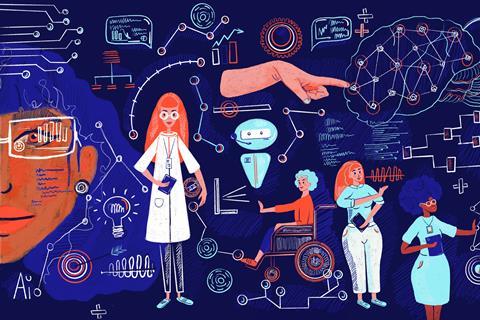Promote women role models and empower your learners to engage with science at school and beyond

Each February, organisations, political leaders and educators mark the United Nations International Day of Women and Girls in Science. With recent reports of more than one million women working in STEM-related fields in the UK, this year there were, not surprisingly, some self-congratulations and metaphorical pats on backs. Yet, it’s no secret that lingering gender disparities and ingrained social stereotypes remain, with a mere 26% of the STEM workforce made up of women, and a much smaller number in leadership positions.
As educators, we work from the ground up, tasked with supporting young women and girls into previously uninhabited fields, such as those of science, technology, engineering and mathematics. Women STEM specialists can share their own experiences of swimming against the current, such as my first job as the only developmental chemist who was a woman in my team. We need to promote women STEM role models – not just well-known ones like Gill Reid, president of the Royal Society of Chemistry, but more accessible and relatable examples for students, such as a school science technician or the local pharmacist. In addition, there need to be innovative grassroots initiatives, empowering girls in the classroom or community.
Teachers can be superheroes, leaving lasting impressions on students’ lives. Early exposure to STEM experiences is key. UK primary schools prioritise English and maths with less than 10 per cent of learning time allocated to science. But Ferndale Primary School in Swindon encourages a lifelong love of science in pupils. Each week, one year 5 child can take home a science bag containing a telescope and stargazing books. They experiment and record observations, which they then share with the class. Inclusive initiatives such as these should be carried out nationally, with schools working collaboratively with companies and policymakers to share resources.
Exposure to women role models in STEM should not be limited to science teachers; it can be woven into every subject and classroom, whether primary or secondary. In the latter, for example, students could interview a prominent women scientist from a local university or company as part of their English study. In history, they could research women scientists whose discoveries had an impact in the time period they are studying.
Inviting students to deal with real-world issues engages inclusive learning, where all participants feel empowered
Encouraging holistic approaches to education is essential to connecting students with real-world issues. At my school, our environmental science teacher, Martyn Steiner, has organised a variety of Green Seasoning initiatives. For these, students venture beyond the classroom and work on community projects, which deepen their science knowledge and connect them with global issues such as climate change and sustainability … and foster high engagement with all in the classroom.
As part of the International Baccalaureate curriculum, our students take part in interdisciplinary unit days, with students merging subjects like science and maths in real-world scenarios. For example, grade 6 (11–12 year-old) students studied zoo habitat design at London Zoo. They compiled data about animal behaviour – such as how much time was spent eating, walking, drinking or swimming in the wild – before suggesting improvements the zoo could make to its enclosures. Inviting students to deal with real-world issues engages inclusive learning, where all participants feel empowered.
Looking back at my own experience, both at university and as a developmental chemist, I realised that my choice of career in science and research was stimulated by a combination of factors. The passion stemmed from my initial pharmaceutical science course which had a major lab component. I was inspired by women engineers working in the field. Enrichment came from being part of meaningful community projects. And all of these tie into my current role teaching science – a role that plays a crucial part in harnessing the rising tide of girls and women in STEM positions.
Saba Lodhi is an environmental activist, science researcher and teacher at Halcyon London International School











No comments yet